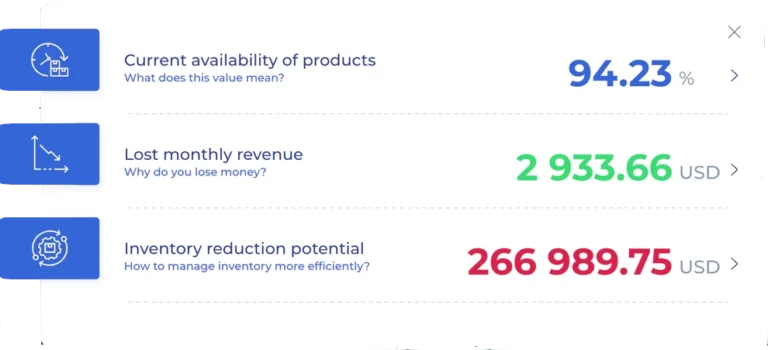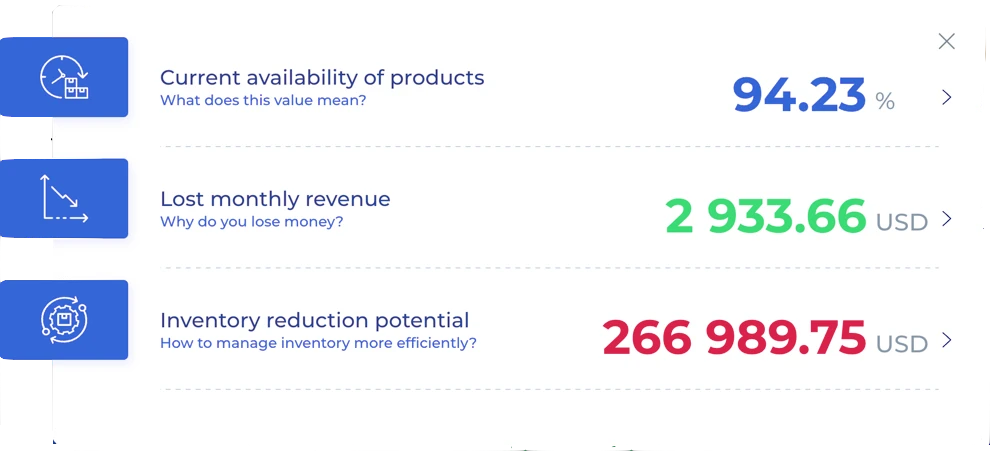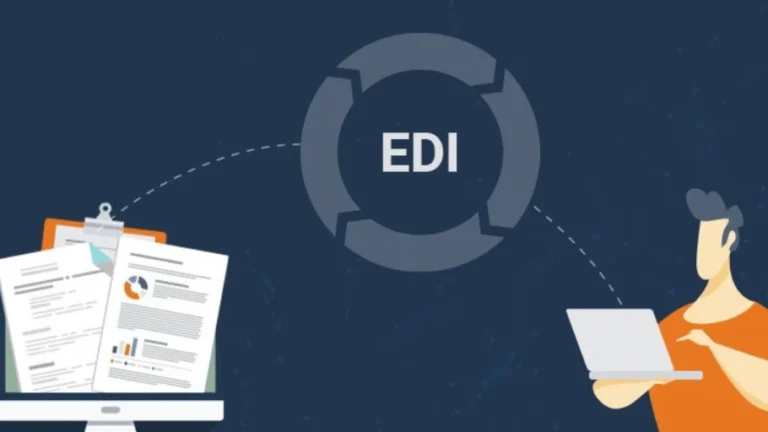Inventory forecasting is the process of predicting future demand for a product to ensure that the right amount of inventory is available in a specific period. With accurate inventory forecasting, you can optimize inventory levels, meet client demands, and increase revenue for your wholesale business.
In this article, we provide a quick guide to inventory forecasting for wholesalers. We will cover everything you need to know, including:
- What is inventory forecasting?
- What are the benefits of accurate inventory forecasting?
- How to forecast inventory.
- Common inventory forecasting methods.

What is Inventory Forecasting?
Inventory forecasting uses forecasting methods to accurately predict future demand for products. It involves analyzing past sales data, market trends, and other factors to make informed predictions. By forecasting demand, wholesalers can ensure that they have the right amount of inventory on hand to meet client demand without the unnecessary expenses of excess inventory.
Find out everything you need to know about managing your wholesale inventory in our guide to inventory management.
What Are The Benefits of Accurate Inventory Forecasting?
Accurate inventory forecasting provides numerous benefits for wholesalers, including:
- Reduce Waste and Stockouts: Accurate inventory forecasting can assist wholesalers to optimize inventory levels. By having a better understanding of future demand, wholesalers can avoid ordering too much inventory, which can lead to waste and excess inventory costs. Wholesalers can also prevent having too little inventory, which can lead to stockouts and lost income.
- Increase Revenue: Inventory forecasting can also help wholesalers increase revenue. By ensuring that they have the right amount of inventory on hand to meet client needs, wholesalers can maximize sales by meeting client demand.
- Improved Cash Flow: Accurate inventory forecasting has the potential to significantly improve a wholesaler’s cash flow. By reducing waste and minimizing stockouts, wholesalers can avoid unnecessary costs and lost sales. Better managing cash flow through accurate inventory forecasting can lead to improved financial stability and the ability to invest in growth opportunities.
- Better Planning and Efficiency: By providing insights into future demand, inventory forecasting allows wholesalers to plan production, procurement, and distribution activities more effectively, leading to increased efficiency and better resource allocation.
- Reduced Inventory Costs: Reduced inventory costs can have a significant impact on a wholesale business’s bottom line. By optimizing inventory levels through accurate forecasting, wholesalers can reduce the costs associated with excess inventory, such as storage fees and the risk of spoilage.
How to Forecast Inventory
Accurate inventory forecasting involves these steps:
- Collect Data: Gather past sales data, market trends, and other relevant information.
- Analyze Data: Use statistical analysis to identify patterns, trends, and seasonality.
- Choose a Forecasting Method: Select a forecasting method that is appropriate for your wholesale business needs.
- Forecast Demand: Use the chosen method to predict future demand.
- Evaluate Results: Compare actual sales to predicted sales to evaluate the accuracy of your forecast.
Common Inventory Forecasting Methods
We outline each of these methods:
Trend Analysis
One common approach to trend analysis is to use a statistical method called linear regression. This method involves fitting a straight line to the historical data, with the slope of the line representing the rate of change in demand over time. Once the slope has been calculated, it can be used to make predictions about future demand.
Graphical Methods
For example, a line graph can be used to track sales over time, allowing wholesalers to quickly identify trends or patterns in demand. A scatter plot can be used to identify any relationship or correlation between two variables, such as price and demand.
Qualitative Forecasting
One common qualitative forecasting technique is the Delphi method, which involves gathering a panel of experts and asking them to provide their opinions on future trends and developments. The opinions of the experts are then compiled and used to make predictions about future demand. Surveys can also be conducted to collect information directly from clients, providing a more accurate picture of demand.
Quantitative Forecasting
Quantitative forecasting involves using a inventory forecasting formula to predict future demand. This method is especially useful when historical data is available and when the wholesaler has a large amount of data to analyze.
There are several quantitative forecasting methods:
- Moving Averages: Moving averages involve calculating the average of a certain number of previous periods to predict future demand. Moving averages are usually used when you want to forecast for a short period or when there is no clear trend in the data.
- Exponential Smoothing: Exponential smoothing gives more weight to recent demand data points and exponentially decreases weight to demand points as they become increasingly distant. Exponential smoothing is beneficial when there is no obvious trend in the data.
- Regression Analysis: Regression analysis is a statistical method used to identify the relationship between a dependent variable and independent variable/s. Regression analysis is useful to determine inventory forecasting for sales and factors that may affect the demand, such as a price change.
Seasonal Forecasting
A seasonal index is one of the most common methods used for seasonal forecasting. The seasonal index method involves calculating the average demand for a specific season, such as summer, and dividing it by the average demand for the entire year. The resulting ratio represents the seasonal index for that season, which can then be used to adjust future demand forecasts.
Accurate Inventory Forecasting with Salesorder
With our inventory forecasting, you can improve your forecasting efficiency to ensure you are meeting client demand and increasing revenue. We take the complexity out of inventory forecasting and provide you with recommendations you can trust to optimize your inventory planning. Our AI-lead software will learn from your datasets and provide forecasting results that will allow you to drive growth.
Get in touch with an expert to discuss how our inventory forecasting can benefit your wholesale business.
FAQs
What is the formula for forecasting inventory?
The formula for forecasting inventory depends on the method used. Some common methods include trend analysis, quantitative forecasting, and qualitative forecasting.
How do you forecast inventory in Excel?
Excel has several built-in forecasting tools, including moving averages, exponential smoothing, and linear regression. To use these tools, you need to have historical sales data and select the appropriate method for your business needs.
What is the best method for inventory forecasting?
The best method for inventory forecasting depends on several factors, including historical data availability, forecasting period, seasonality, accuracy, and data complexity. It is essential to choose a method that is appropriate for your business needs and has a track record of producing accurate forecasts.





